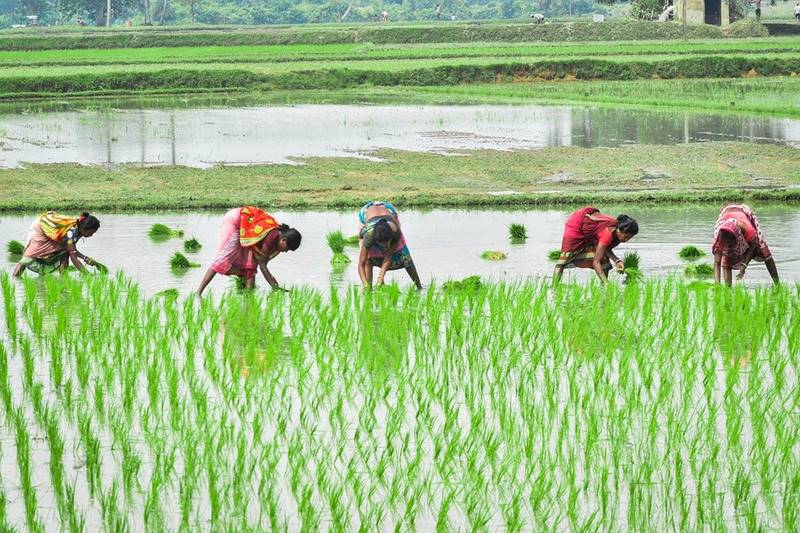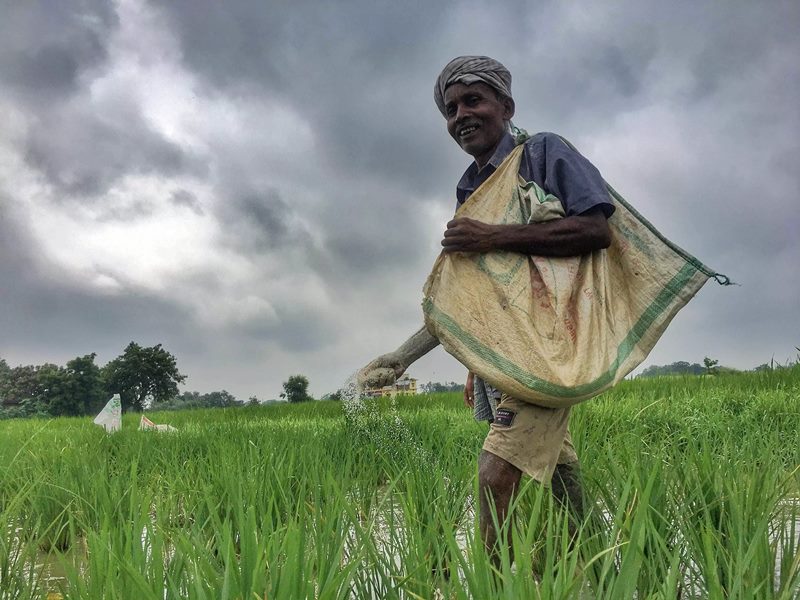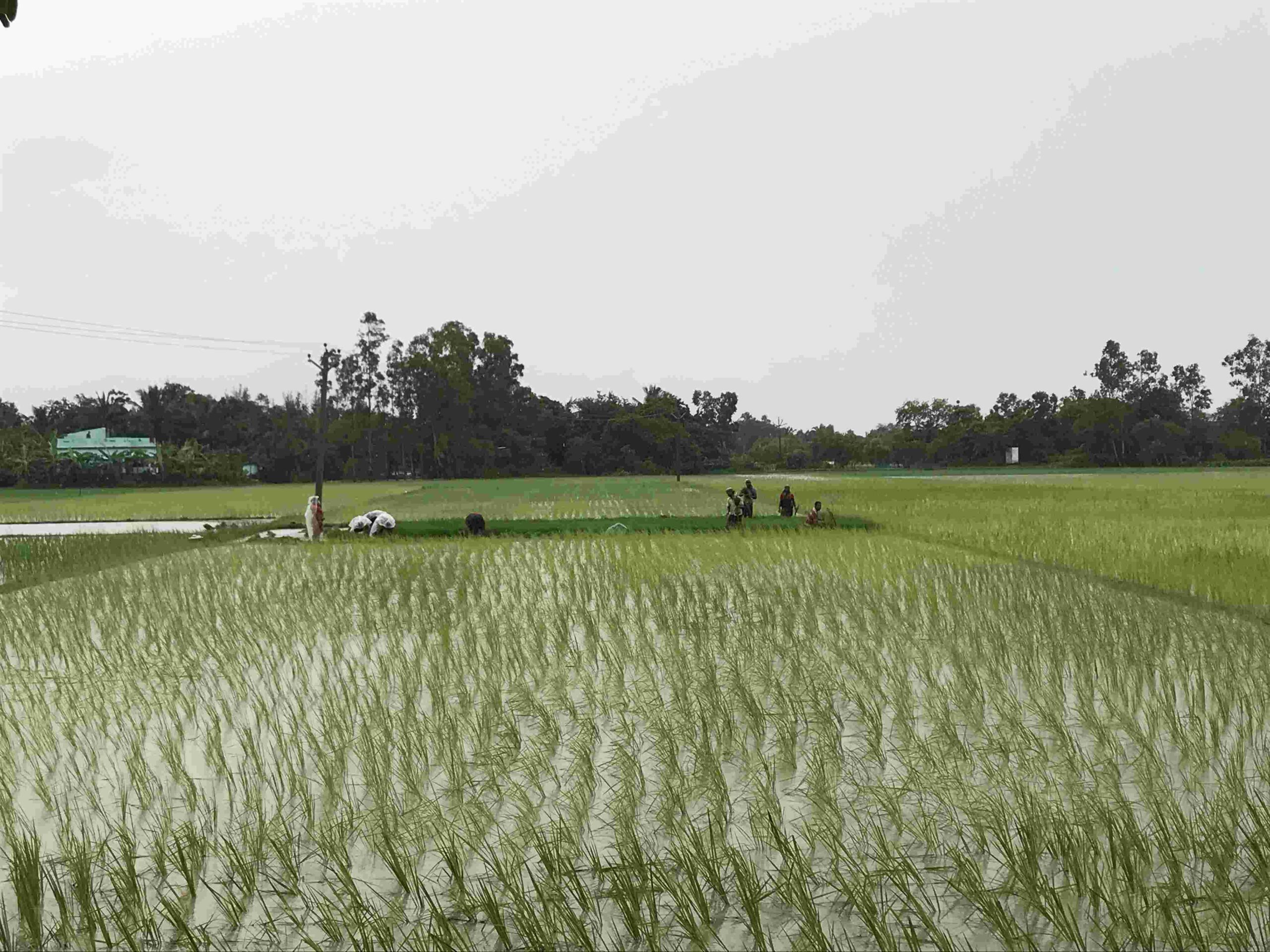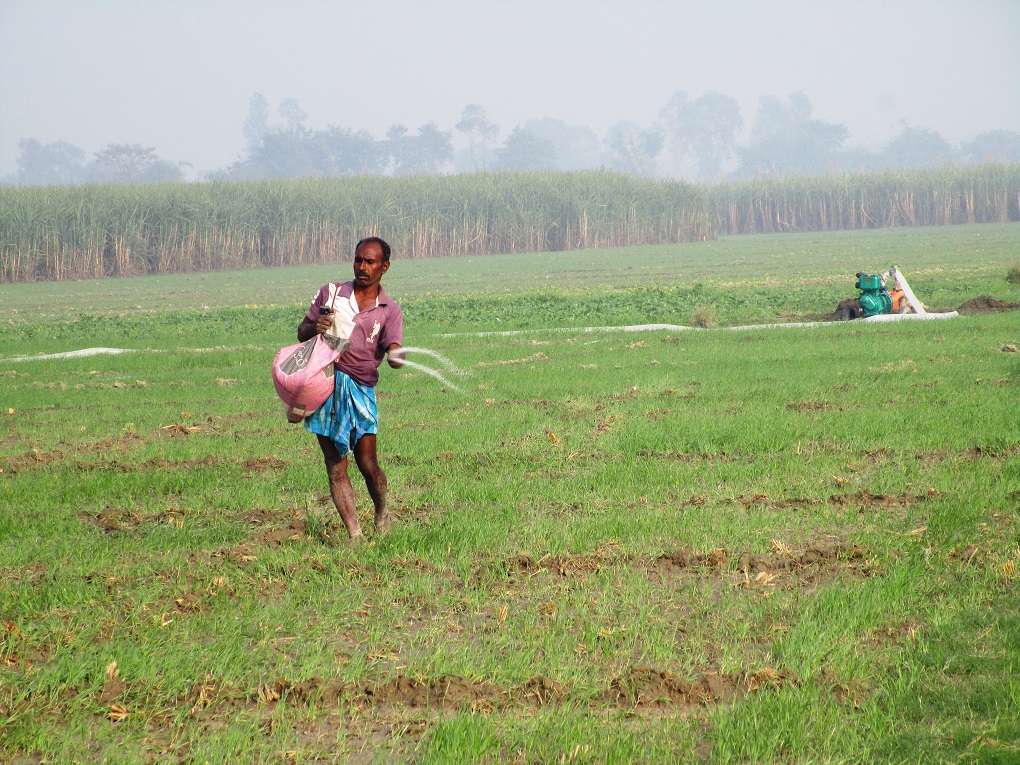Supaul, Bihar
With the southwest monsoon in an active phase, it is the peak kharif sowing season in India with farmers across the country purchasing urea and other chemical fertilisers to spread on their fields for a bountiful crop.
On July 9, Umesh Rai, a farmer from Pipda village in Supaul district, visited the nearby store to buy seven sacks of urea. But unlike other farmers in the country, who buy urea at the central government-fixed price, Rai had to pay much higher for each sack of 45 kilogrammes (kg) of urea.
“I purchased seven sacks of urea paying three hundred and thirty rupees a sack, which is sixty four rupees more per sack from the government-fixed rate,” Rai told Gaon Connection. The 65-year-old farmer owns 200 kattha of land (22 kattha = one acre).
Strangely, and also against the law of the land, farmers in Bihar are shelling out a lot more money to buy urea and other fertilisers than their counterparts in Uttar Pradesh, Punjab and Haryana.
For example, while a 45-kg sack of urea in Uttar Pradesh costs Rs 266.50, in Bihar the same amount may cost between Rs 300 and Rs 360. Farmers of Bihar are forced to pay anything up to Rs 100 more per sack of urea. This, despite the state government declaring zero tolerance towards anyone selling urea above the prescribed rate.

“The cost of urea differs depending on the brand. While one sack may cost three hundred and sixty rupees a sack, another one can cost three hundred and thirty a sack in Bihar,” said Rai, whose Pipda village is located about 200 kms from the state capital Patna.
The woes of farmers in Bihar do not end here. Sometimes, even if they are willing to pay more, urea is unavailable in far flung areas of the state, they complain.
Pass the buck
Like Rai, thousands of other farmers in the state are paying more for urea, Diammonium Phosphate (DAP) and potash. The retailers sell it to the farmers at rates higher than the maximum retail price (MRP), because retailers claim they buy fertilisers from the wholesalers at higher rates.
The wholesalers defend themselves by saying that the cost of transporting the goods to the sales centres costs them a lot of money and what the government pays them for it is merely one fourth the cost of what they spend.
Also Read: Rice racket: From the paddy fields of Bihar to the mandis of Punjab
“We are forced to sell above MRP. Companies and wholesalers sell fertilisers to us at rates higher than the MRP,” Sudhanshu Narayan Singh, president, Retail Fertilizers Association, Muzaffarpur district, told Gaon Connection. “Over and above that we have to pay the rent for our shops, pay our staff salaries, etc.,” he added.
Order, order, order
On July 12, the state department of agriculture issued an order mentioning that it had received a spate of complaints about urea being sold at much higher rates than the MRP. The order reiterated that anyone found to be selling fertilisers at more than the MRP would face severe action.
For the kharif 2021 season, the responsibility of transporting the fertilisers to the sales centres was of the companies, the order stated. This would also ensure the farmers got the fertilisers at a fair price.

However, the order has not yet been translated into action. “There are many government directives that are not carried out. Everything remains the same on ground,” a retailer from Supaul, on conditions of anonymity, told Gaon Connection. In many rural areas, shopkeepers are still selling the urea at a higher rate to farmers, he said.
Last month also, in June, the state agriculture department had demanded the wholesalers and retailers to provide an affidavit that they would not sell fertilisers above the MRP. This had led to outrage. Many of them outright refused to do so.
“Sell at the government fixed rate or shut down your shops,” Shyam Bihari Meena, district magistrate, Madhepura, told the representatives of fertiliser manufacturing companies as well as wholesalers, at a meeting. However, of the 12 wholesalers in the district only two submitted their affidavit. Similarly, of the 640 retailers in the district, only 140 submitted them.
Meanwhile in Muzaffarpur, Madhepura, Purnea, Bettiah and several other parts of the state, wholesalers and retailers have stopped selling urea. This has added to the problems of farmers and fertiliser manufacturers in the state.
We’re helpless, say wholesalers
Bihar is one of the leading paddy cultivating states in the country. Seventy six per cent of its population is directly or indirectly involved in agriculture. Of the nearly eight million hectares under cultivation, 3.2 million hectares grow paddy. Nearly 10.5 million farmers in Bihar own land of which nearly 83 per cent are marginal farmers (owning less than one hectare land each).
In 2019-20, Bihar used the most fertilisers. The state recorded the use of 245.25 kgs per hectare of fertilisers. In the last five years the state has used 200 kgs per hectare or more of fertilisers, annually.

The state consumes one million tonne urea per year. Urea is used in the fields about 10-25 days after paddy is transplanted. The next 10-15 days is when the maximum amount of urea will be used in the farms, said the farmers. However, the price controversy has led to many shops downing their shutters.
“All of Bihar knows about this problem. Farmers know the fertiliser costs have gone up,” a shopkeeper on conditions of anonymity told Gaon Connection. He added that the authorities were pressurising the shopkeepers at a time when they were fully aware the farmers needed the fertilisers. “But if we don’t make any profit, why should we sell,” he asked.
Also Read: Paddy Loot: Punjab Police confiscates illegally smuggled paddy into the state
“The wholesalers have to pay anything between Rs 209 to Rs 240 per sack of urea to pick it up from the rack point. Over and above this we have to pay extra for loading and unloading,” Shankar Singh, of Fertilisers Dealers’ Association in Muzaffarpur, told Gaon Connection. “But the government rate is fixed at Rs 266.50,” he said.
“We have no problem selling fertilisers at MRP, but we should also get it at a reasonable price,” Harishankar Mandal, a retailer of fertilisers in Saharsa district, told Gaon Connection. “Fertilisers companies should reach the sacks of urea to the sale points and increase the commission. Only then can we sell it at the MRP to the farmers,” 61-year-old Mandal added.
Farmers suffer
According to Umesh Rai of Pipda village, he requires approximately 20-22 sacks of urea for cultivating paddy. So he spends Rs 1,300-1,500 on just urea alone. He said he had to pay more for his other fertilisers such as DAP, whose MRP is Rs 1,200 for a sack of 50 kgs, but which he has to buy at Rs 1,300, or more.
To add to his woes, Rai said, “Last year I sold paddy at fourteen hundred rupees a quintal. But now I am not getting more than twelve hundred rupees a quintal.”
The Primary Agricultural Credit Society (PACS), plays a vital role in all agriculture related activities in Bihar, including buying of grains from the farmers, farmer loans, distribution of fertilisers, etc. Urea is also supposed to be distributed through PACS.

“But often PACS does not have enough urea to fulfil the needs of the farmers, though it does sell what is available at MRP,” Chandra Mohan Yadav from Motihari district, told Gaon Connection.
“There is no PACS in the village for the last ten years. Everything is done through private dealers,” Arvind Sahu, the village head of Kharik in Madhubani district, told Gaon Connection. “Urea is selling in the village at three hundred and fifty rupees and DAP at thirteen hundred rupees,” he added.
Retailers and wholesalers blame government
Retailers and wholesalers claim it was impossible for them to sell urea at MRP. “The government controls the sale of urea. The rate and commission are both fixed by the government,” Suman Chaudhary, a wholesale supplier of fertilisers, told Gaon Connection. Therefore the government should also determine how the fertilisers should reach the sale point, he said.
“The amount that the government pays us to transport the goods from the rack point [where the goods are delivered by train] to the sales centres is only one fourth the amount of what we incur as expenses,” Chaudhary explained. It was unfair, he added, that despite this, the government wanted them to sell only at MRP.
Saying this was an old issue that had been rankling farmers and shopkeepers alike, Chaudhary said that several protests had been lodged with the government, but it had turned a deaf ear to them.
Also Read: ‘We’re ready to die but won’t let an embankment be built on the Bagmati’
“There is no rack point in Supaul and the urea comes to us from Madhepura district that is 36 kilometres away,” Chaudhary said. The government has fixed Rs 154 per tonne as the transportation charges to the sale points. But there are sale points that are really far, and the government rates do not cover the cost of transporting the goods there, he pointed out.
“For example in Supaul, if we have to deliver to the Ganeshpur sale point that is at a distance of eighty kilometres, it costs almost eight hundred rupees a tonne. Even then the government insists we sell at MRP,” Chaudhry complained.

Government should step in and help
Wholesaler Suman Chaudhary from Supaul said, “The commission on urea is three hundred and fifty four rupees per tonne, that is sixteen rupees per bag [45 kgs].” The commission of Rs 16 has to be shared between the wholesaler and the retailer so each gets only Rs 8 per bag as commission, he said.
The solution to this problem, Chaudhry said, was the government should take on the responsibility of reaching the fertilisers to the sale point, and give the wholesalers five per cent commission and the retailers eight per cent.
“There are no fertiliser manufacturers in Bihar. So the companies argue that they spend more money transporting the goods from other states,” Chaudhary explained. There are plans to start a factory at Barauni in Begusarai district. It remains to be seen how soon that starts production, he said.
The manufacturing and sale of urea and DAP is controlled by the central government and they are heavily subsidised. In the general budget for the financial year 2021-22, the central government announced a subsidy of Rs 79,530 crore as subsidy for fertilisers.
In the last 10 years, every year nearly 50 million metric tonnes of fertiliser have been used in the country. And, because it is the cheapest, urea is used the most as a fertiliser. According to the central government, nearly 30 million metric tonnes of urea are used every year, that is nearly 55-60 per cent of all fertilisers.
Read the story in Hindi.


















